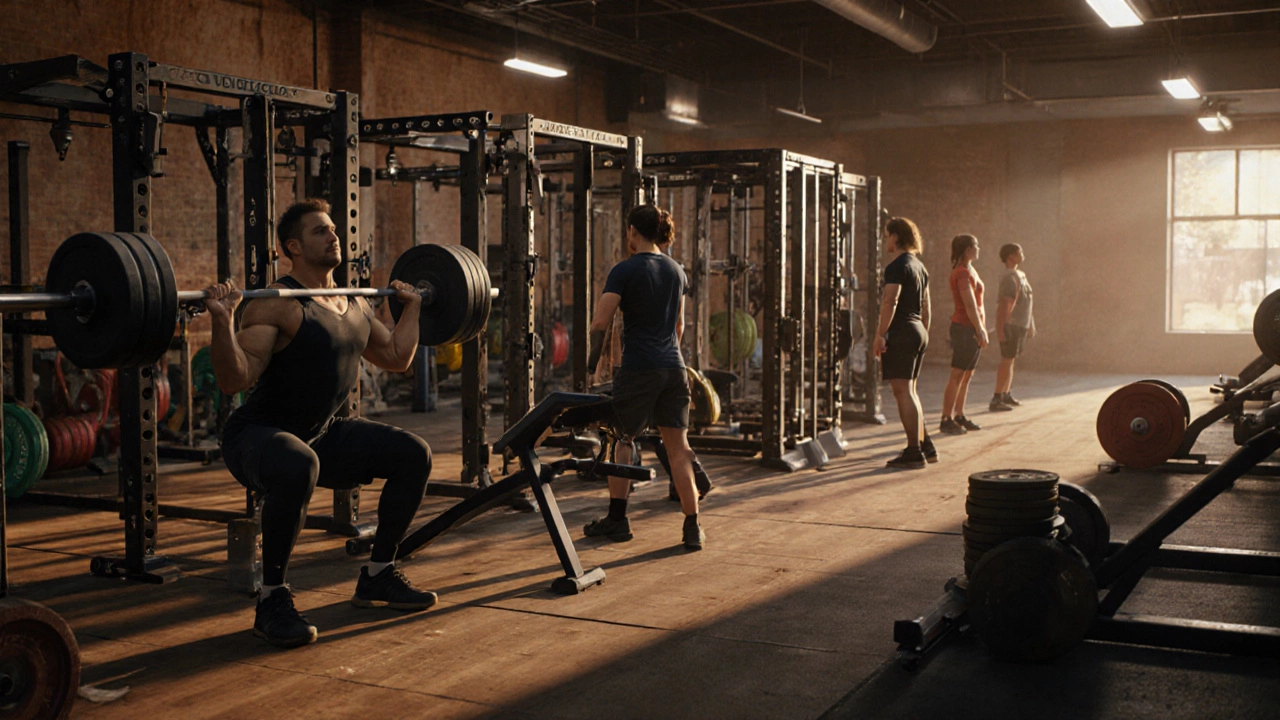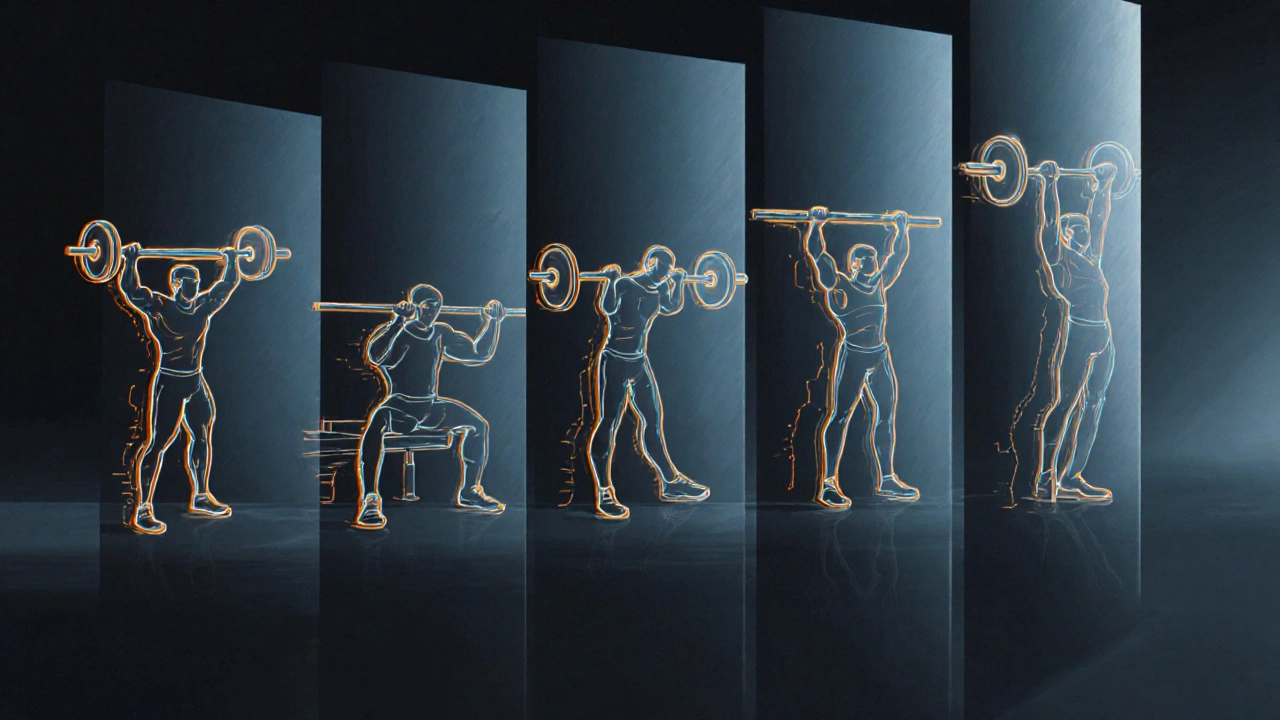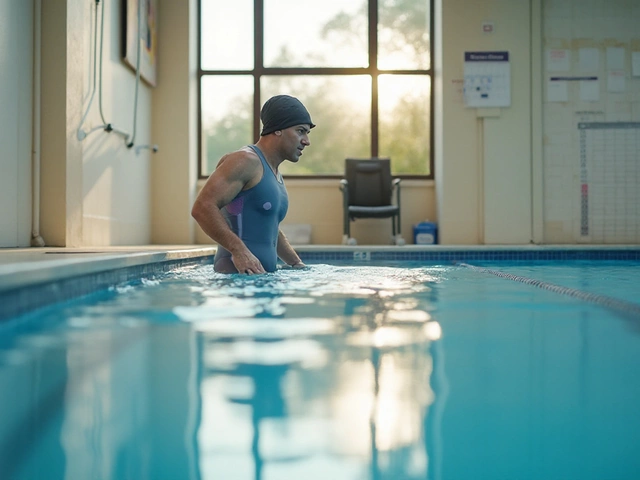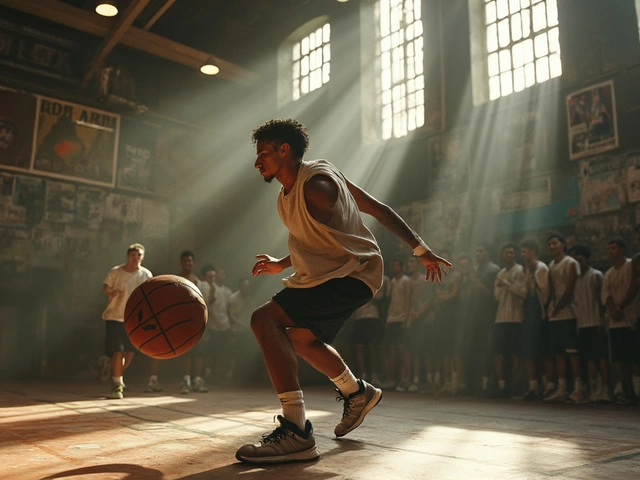
Gym Workouts October 17, 2025
The Big 5 Exercises: Order, Form & Programming Guide
Big 5 Exercise Order Checker
Why Order Matters
Placing the most demanding full-body movements later in your session protects your lower back and prevents form breakdown. The recommended sequence is: Squat → Bench Press → Overhead Press → Barbell Row → Deadlift.
Your Sequence
Correct Sequence
Most newcomers spend months chasing the perfect bicep curl or endless ab circuits, yet the real strength gains hide behind five core moves. Mastering the Big 5 exercises in the right sequence can shave years off your progress and keep you injury‑free.
Key Takeaways
- The Big 5 are squat, bench press, overhead press, barbell row, and deadlift.
- Start with lower‑body dominant lifts and finish with the deadlift to protect your lower back.
- Consistent form, progressive overload, and proper warm‑up are non‑negotiable.
- A simple three‑day split (Push‑Pull‑Legs) lets you hit each lift twice a week.
- A quick reference table helps you compare load, muscle focus, and equipment.
What Are the Big 5 Exercises?
Big 5 exercises are a group of compound lifts that involve multiple joints and large muscle groups, forming the foundation of any strength‑focused routine. They were popularized in the 1950s by weight‑lifting legends and remain the gold standard for building functional power.
Why Order Matters
Each lift taxes the nervous system and muscles differently. Placing the most demanding full‑body movements later in the session ensures you still have fresh energy for proper technique. A poorly sequenced workout can lead to fatigue‑driven form breakdown, increasing the risk of lower‑back or shoulder injuries.
Recommended Order & How to Execute
- Squat - Begin with the squat because it recruits the largest muscle groups (quads, glutes, core). A strong squat sets the tone for the rest of the session.
- Stance: feet shoulder‑width, toes slightly out.
- Depth: break parallel, keeping chest up.
- Breathing: inhale on the descent, forcefully exhale while driving up.
- Bench press - Moves the focus to the upper body while your lower body is still relatively fresh.
- Grip: just outside shoulder width.
- Bar path: lower to mid‑chest, press up in a slight arc.
- Spotter: essential for safety beyond 80% of 1RM.
- Overhead press - A vertical push that follows the horizontal bench press, allowing the shoulders to stay engaged without excessive fatigue.
- Stance: feet hip‑width, core braced.
- Press: drive the bar straight overhead, lock elbows.
- Lockout: keep a slight arch in the lower back, not excessive.
- Barbell row - Targets the posterior chain (back, traps, rear delts) after the shoulders have been taxed, helping balance push‑pull development.
- Hinge: hips back, torso ~45° from floor.
- Pull: bring the bar to the lower ribcage.
- Control: lower the weight slowly to avoid momentum.
- Deadlift - Placed last because it demands a fresh lower back and strong hip hinge. Finishing with deadlifts also reinforces proper posterior chain activation for the day.

Form Fundamentals (Why They Matter)
Good form isn’t a “nice‑to‑have” - it’s the gateway to progressive overload. Below are three universal cues that apply to every lift in the Big 5:
- Neutral spine: Keep the natural curve of the spine throughout the movement.
- Brace the core: Imagine preparing to be punched; tighten the mid‑section.
- Maintain tension: Never let the weight “relax” between reps; keep muscles engaged.
Programming Tips for Consistent Gains
Once you’ve locked in the order and form, the next challenge is how to load the lifts over weeks. Here are proven strategies:
- Progressive overload - Add 2.5kg (5lb) to the bar each week, or increase reps if the weight plateaus.
- Linear progression for novices: 3×5 (three sets of five reps) for the first 8-12 weeks.
- Periodization for intermediates: switch from 5×5 to 4×6, then 3×8 to keep stimulus fresh.
- Deload every 4-6 weeks: reduce volume by 40% to let joints recover.
Sample 3‑Day Push‑Pull‑Legs Routine
- Day1 - Push
- Bench press - 3×5
- Overhead press - 3×6
- Incline dumbbell press - 3×8
- Day2 - Pull
- Barbell row - 3×5
- Pull‑ups - 3×max
- Face pulls - 3×12
- Day3 - Legs
- Squat - 4×5
- Deadlift - 2×5 (light)
- Leg press - 3×10
Rotate this cycle, resting at least one day between sessions. After 4-6 weeks, swap the light deadlift day for a heavier 1×5 set to keep the nervous system adapting.
Common Mistakes & How to Fix Them
| Lift | Typical Mistake | Quick Fix |
|---|---|---|
| Squat | Knees caving inward | Push knees outward, use a resistance band around thighs. |
| Bench press | Bar bounces off chest | Lighten the load, pause 1‑second on the chest. |
| Overhead press | d>Excessive arch in lower backEngage core, keep hips under the shoulders. | |
| Barbell row | Rounding the upper back | Chest up, pull shoulder blades together. |
| Deadlift | Rising hips too early | Focus on pushing the floor away, keep hips level until lockout. |
Frequently Asked Questions
Can beginners start with the Big 5 right away?
Yes, but start with an empty bar or light dumbbells to learn the movement patterns. Prioritize form over weight for the first 4‑6 weeks.
How often should I train each lift?
A 3‑day Push‑Pull‑Legs split lets you hit each lift twice a week, which is ideal for most intermediate lifters.
Do I need a power rack for the squat?
A rack is safest for heavy loads, but a squat stand or smith machine can work for light‑to‑moderate weights.
Should I do the deadlift before or after the squat?
Place deadlifts after squats in the same session, or on a separate day, to preserve lower‑back freshness.
What rep range is best for strength?
5‑6 reps with 80‑85% of your 1RM is the classic strength zone. Adjust to 3‑5 reps for maximal strength or 8‑12 for hypertrophy.
Next Steps & Troubleshooting
If you’re stalling, audit the three pillars: technique, load progression, and recovery. Film your lifts, add 2.5kg each week, and ensure 7-9hours of sleep. For persistent lower‑back ache, drop the deadlift weight by 20% and focus on hip‑hinge drills for two weeks before returning.




